-
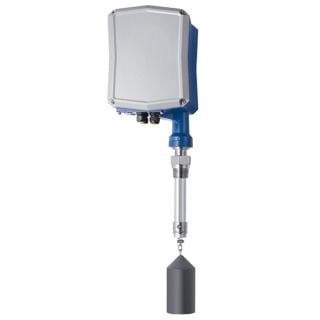
Elektromechaniczny system
NivoBob® - NB 3100
Medium Ciała stałe Ciśnienie procesowe -0,5 bar … +1,7 bar (-7.3 psi … +25 psi) Temperatura procesu -40°C ... +250°C (-40°F … +482°F) -
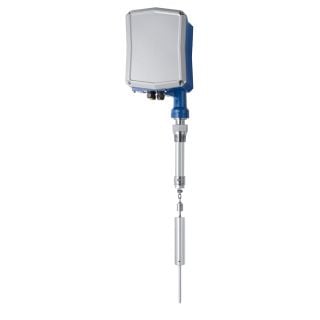
Elektromechaniczny system
NivoBob® - NB 3200
Medium Ciała stałe Ciśnienie procesowe -0,5 bar … +1,7 bar (-7.3 psi … +25 psi) Temperatura procesu -40°C ... +250°C (-40°F … +482°F) -
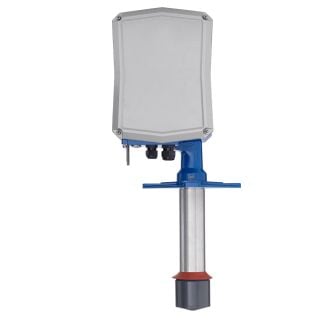
Elektromechaniczny system
NivoBob® - NB 3300
Medium Ciała stałe Ciśnienie procesowe -0,5 bar … +1,7 bar (-7.3 psi … +25 psi) Temperatura procesu -40°C ... +80°C (-40°F … +176°F) -
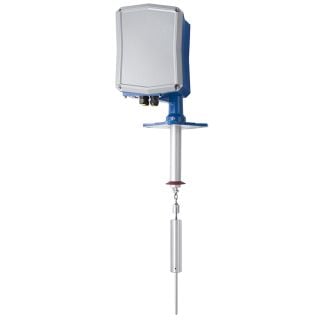
Elektromechaniczny system
NivoBob® - NB 3400
Medium Ciała stałe Ciśnienie procesowe -0,5 bar … +1,7 bar (-7.3 psi … +25 psi) Temperatura procesu -40°C ... +80°C (-40°F … +176°F) -
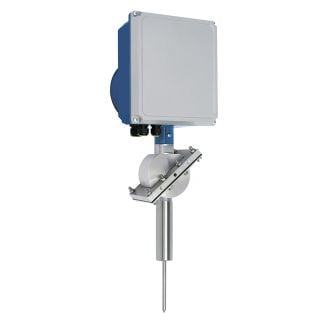
Elektromechaniczny system
NivoBob® - NB 4100
Medium Ciała stałe Ciśnienie procesowe -0,2 bar … +0,2 bar (-3.0 psi … +3.0 psi) Temperatura procesu -40°C ... +80°C (-40°F … +176°F) -
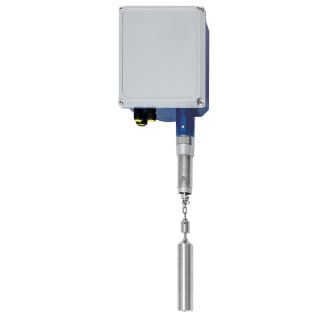
Elektromechaniczny system
NivoBob® - NB 4200
Medium Ciała stałe Ciśnienie procesowe -0,2 bar … +0,2 bar (-3.0 psi … +3.0 psi) Temperatura procesu -40°C ... +80°C (-40°F … +176°F)
Ciągły pomiar poziomu za pomocą elektromechanicznego przetwornika linkowego
Określanie poziomu za pomocą elektromechanicznego przetwornika linkowego jest jedną z najbardziej przyjaznych dla klienta technologii ze względu na jej prostotę i zrozumiałość. Podstawą tej metody pomiarowej jest szpula taśmy lub liny napędzana silnikiem elektrycznym i przymocowany do niej obciążnik. Można go dobrać do gęstości nasypowej medium.
Elektromechaniczne przetworniki linkowe są montowane na dachu zbiornika. Obciążnik pomiarowy znajduje się na początku liny lub taśmy, która jest nawinięta na szpulę napędzaną silnikiem elektrycznym. Gdy obciążnik pomiarowy zestknie się z medium, kierunek nawijania szpuli zostanie odwrócony i obciążnik powróci do pozycji początkowej. Podczas ruchu obciążnika w dół, odległość jest mierzona elektronicznie poprzez obrót szpuli z liną/taśmą. Mikroprocesor przekonwertuje zmierzoną odległość na sygnał wyjściowy jako poziom lub objętość, która jest zależna od geometrii silosu.
Elektromechaniczne przetwormniki linkowe są odpowiednie do pomiaru poziomu ciał stałych i ciał stałych (osadów) w cieczach. Sonda / obciążnik tonie w cieczy i zmienia kierunek obrotu dopiero po dotarciu do powierzchni ciała stałego. Masa sondy jest dobierana w zależności od gęstości osadu.
Seria przetworników linkowych NivoBob®
FAQs
How does an electromechanical plumb bob system work?
An electromechanical plumb bob system is used for discontinuous level measurement in silos and containers. Extremely reliable measurement results are achieved both in bulk solids and in interface measurement.
In addition to a 0/4-20 mA signal, an electromechanical plumb bob system also offers communication via Modbus or Profibus DP. The plumb bob sensor is mounted on the tank roof. A sensing weight is lowered into the tank.
The sensing weight is attached to the end of a measuring cable/tape, which is wound onto a spool driven by an electric motor. When the sensor weight hits the product, the winding direction is reversed and the weight returns to its original position. During the downward movement of the sensing weight, the distance is measured electronically by the rotation of the rope/tape reel. The microprocessor converts the measured distance into a volume-specific output signal that depends on the silo geometry.
The output signal is updated after the sensing weight hits the product.
What are the advantages of an electromechanical plumb bob system?
A plumb bob sensor is suitable for almost all types of bulk solids, regardless of the material properties:
- Dielectricity and conductivity of the bulk material
- Dust formation in the silo
- Changing bulk material moisture
- Adhering media No tensile forces on the silo roof, the sensor only touches the surface of the product.
Very accurate measurement, simple adjustment and commissioning.
Transparent measuring principle. Cable, belt and (optional) brushless motor, plus low maintenance.
What diagnostic functions do electromechanical plumb bob systems have?
Extensive diagnostic options are available:
The elapsed length of the sensing weight is compared with the coiled length.
If there is a discrepancy, a message is issued to ensure that the sensing weight is always in the upper end position.
Service interval after a specified number of measuring cycles and a specified running time.
Internal monitoring of the motor, motor electronics and clean running of the rope/tape pulley. The diagnosis is in accordance with NAMUR recommendation NE 107.
